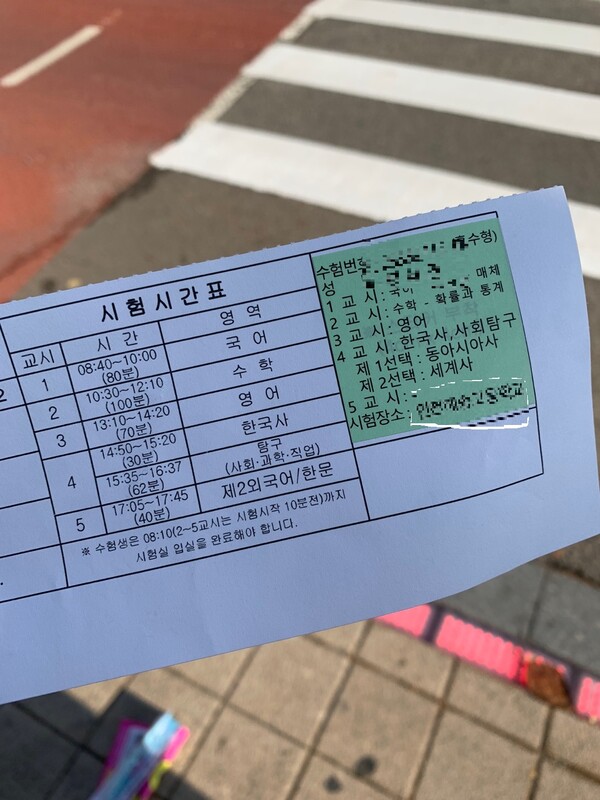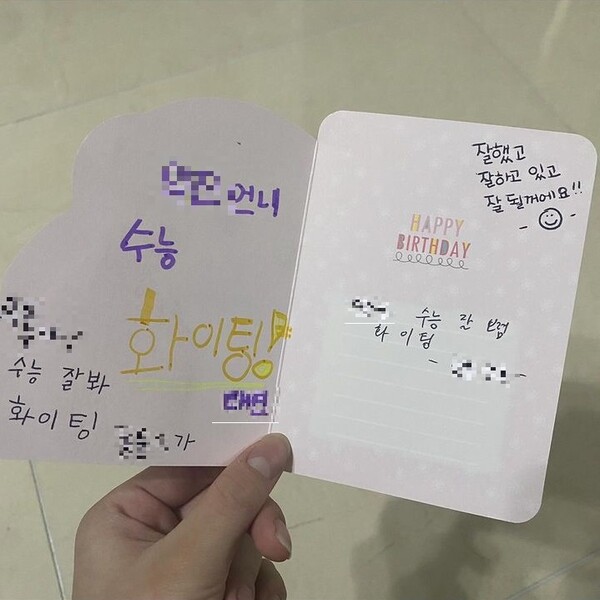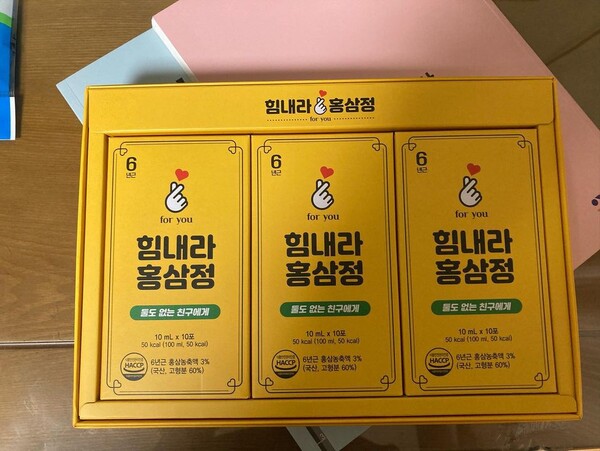The College Scholastic Ability Test (CSAT), commonly referred to as “Suneung” in South Korea, holds significant importance in the country’s education system and society. Similar to the SAT in the United States, the CSAT serves as a culmination of 12 years of primary and secondary education, symbolizing the transition from school to the broader society. While there are various methods for university admission, such as early admission and essays, most students still take the CSAT due to its requirement for admission. On this exam day, high school seniors and repeat test-takers across the nation gather to take the test, creating unique scenes such as traffic controls, enthusiastic support from parents and schoolmates, and the exchange of traditional snacks like rice cakes and yeot, Korean candy, for good luck. The Dongguk Post aims to explore the background of the CSAT and the remarkable sights observed in the month leading up to the exam.

History and background of the CSAT
The origins of university entrance exams in South Korea began with the “Final Examination” system, where the government decided exam dates and subjects while universities created their own tests to select students. This evolved into a national exam system, where students took government-administered exams alongside university-specific tests. However, criticisms emerged regarding issues such as university ranking, equity in high school grading, and the decline of creativity due to multiple-choice questions. By 1993, the exam system became more fragmented, including academic ability tests, high school grades, and essay tests. In 1994, the academic ability test was abolished, giving way to the current CSAT, and university-specific tests were eliminated in 1995. Since its introduction, the CSAT has undergone changes in subjects and grading methods, maintaining significant influence despite fluctuating public opinion. In the 1980s, a mere 27% of students entered university, with a degree becoming synonymous with employment and social status. Although the CSAT’s importance has somewhat diminished due to alternative admission methods, it still faces scrutiny regarding fairness and the expanding influence of private education.

The life of students preparing for the CSAT
Despite criticisms, the CSAT remains a crucial entrance exam. Recent scandals related to early admission processes have sparked debates about fairness, leading to a trend of increasing the weight of regular admission. For example, Dongguk University selected approximately 30% of its students through regular admission in 2020, with plans to raise that to 40% by 2025. Many students continue to prepare for the CSAT, as it is required for various admission paths. The bustling academy districts of Mok-dong and Daechi-dong in Seoul illustrate the unique efforts students make to study. After school, many students attend academies for targeted lessons. In South Korea, academies cannot hold classes after 10 P.M., resulting in parents picking up students after academies. Additionally, online platforms, including government-run EBSi and private online tutoring sites, have become popular for self-directed study. EBSi offers free classes directly related to the CSAT, while private tutoring services provide high-quality resources tailored to students’ preferences.
Preparing for the CSAT, which evaluates years of hard work in a single day, creates immense pressure and anxiety for students. Media and schools emphasize the importance of “D-Day,” and regular mock exams add to the stress. Repeat test-takers, who face the challenge of attempting the exam again after an initial setback, often study under the supervision of academy instructors. However, students’ daily lives are typically more restrictive and repetitive than regular school, adding to the challenges. Given that the CSAT occurs only once a year, poor conditions or excessive nervousness on the exam day can lead to mistakes, heightening stress for both seniors and repeat test-takers.

Scenes on exam day
The CSAT takes place every year on a Thursday in mid-November, a time when the season shifts from autumn to winter, leading to the phenomenon known as “CSAT cold.” On exam day, unique measures are taken for the convenience of students, resulting in distinct scenes. Traffic controls are implemented near testing locations to ensure students arrive on time, affecting office workers’ schedules, and younger students often take the day off. Additionally, flight operations are halted during the 20-minute listening section of the English exam. Supportive schoolmates and teachers gather outside test sites, distributing snacks and offering encouragement. Students receive gifts from adults, typically rice cakes and yeot, which symbolize sticking to their desired university. In the lead-up to the exam, many stores stock CSAT-themed gifts, with chocolate and candy being popular choices.
Parents face the added challenge of preparing lunch boxes since schools do not provide meals on exam day. They carefully select a non-spicy, non-greasy menu to avoid any health issues that could affect performance. Superstitions also play a role, as many avoid seaweed soup, which is believed to bring bad luck on exam day, for seaweed is slippery, and this “slipperiness” could cause a student to fail the exam. This intense yet heartwarming atmosphere reflects the collective support and care for students facing this significant challenge.
After finishing the exam, students experience a newfound sense of freedom. Regardless of the results, there is a prevailing belief that they deserve to celebrate their hard work. Schools often simplify classes or organize experiential learning, while many businesses offer discounts and events for students. Some students prepare for interviews for early admission, while others contemplate where to apply based on preliminary scoring. The CSAT not only marks the end of 12 years of schooling but also symbolizes a new beginning for young adults, establishing itself as a unique cultural phenomenon.
In summary, the CSAT transcends being merely an academic exam, evolving into a cultural phenomenon that reflects societal values and aspirations. It symbolizes hope and ambition for students and families, serving as a critical milestone toward adulthood and a wider world. Despite the pressures and criticisms surrounding it, the communal rituals on exam day—traffic management, student support, and the exchange of well-wishing gifts—foster a sense of unity. Moreover, various organizations honor students’ efforts with celebrations and discounts, enhancing the cultural recognition of this milestone. Ultimately, the CSAT encapsulates the shared cultural experience that mirrors society’s investment in education and its enduring challenges and hopes.
- [465 Cover] The Trend of the Undeclared Major:
- [465 Social] The Disastrous State of Hospital ERs and Reasons Behind It
- [465 K-Trend] Zero-Calorie Obsession Sweeps South Korea
- [465 Interview] Exploring the Value of Pansori with Echoes of Cultural Heritage
- [465 Trip] Experience in Crossing the Boundaries of War, Peace, and Nature in the DMZ
- [465 Clip] Satisfying School Event for Everyone
- [465 Culture] Understanding the Historical and Cultural Legacy of Korean Surnames
- [465 Editorial] Embracing Today Before It Becomes Yesterday

